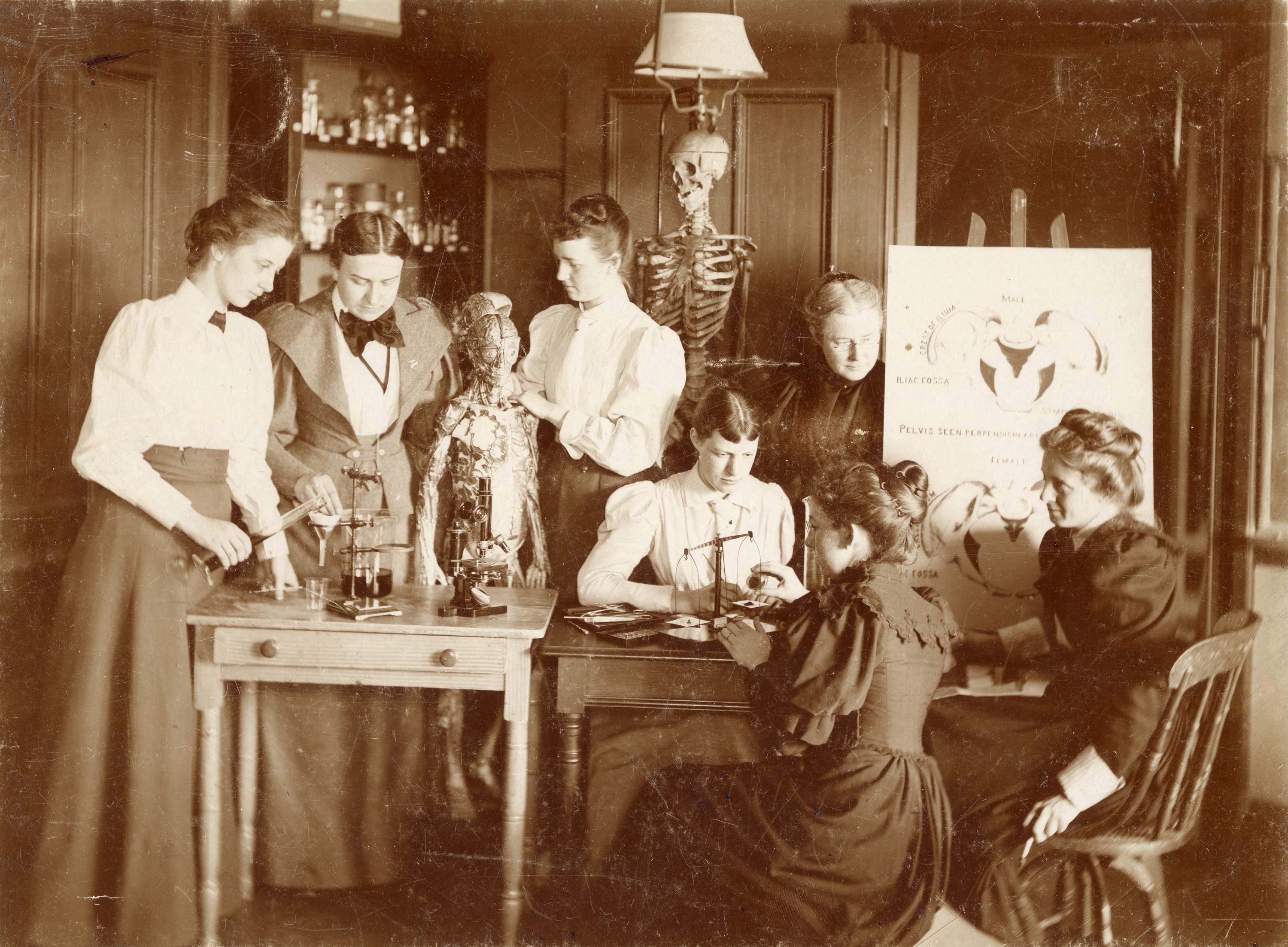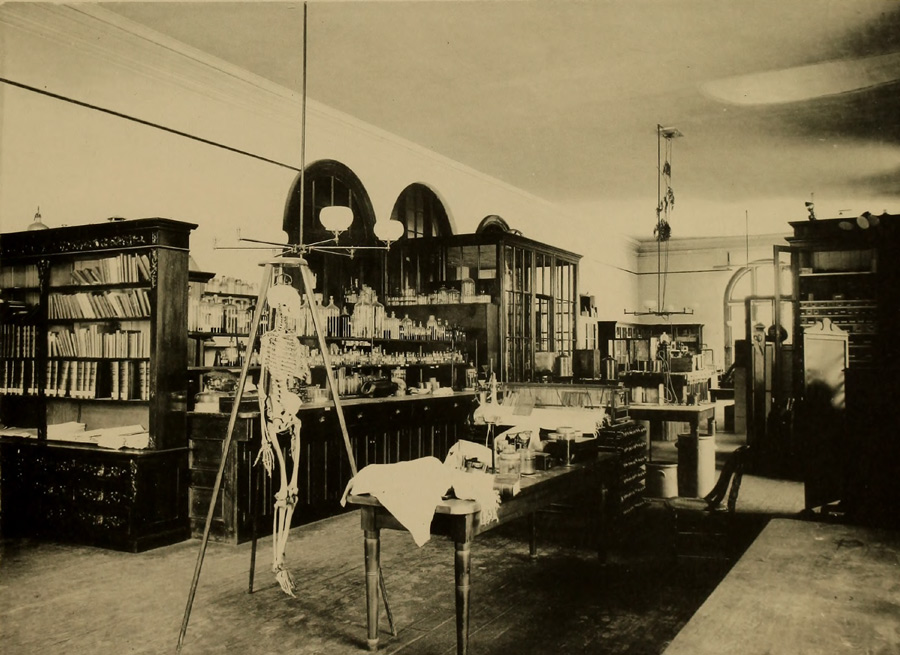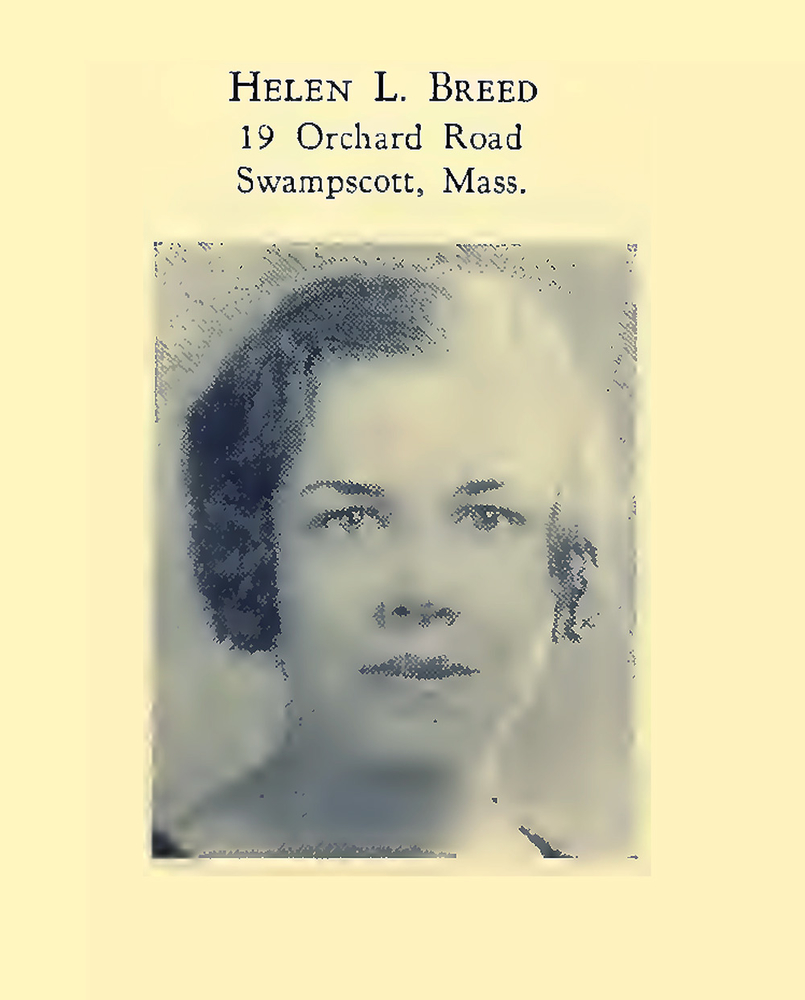Meet Two of the First Female Students to Earn MIT Biology Degrees
-
-
Department of Biology
Filed Under
Recommended

In MIT’s 1887 annual report, former Institute President Francis A. Walker included a section titled, “Women as students in the Institute.” He predicted: “The number of young women attending the Institute of Technology is never likely to be large, considering the nature of the professions to which our courses lead, and the severity of our requirements for admission and for graduation.” More than 100 years later, it’s clear Walker was sorely mistaken; today, women comprise around 40% of the student body and 58% of the students in the Department of Biology. But, for decades, only about 5% of MIT’s students were female.
In 1958, decades after Walker’s report, Marilynn Bever was one of 28 women in her first-year class of 652 students. “I was aware that MIT women are often regarded with suspicion, as being somehow ‘different’ from normal coeds,” Bever later wrote. She was so fascinated by this attitude that she wrote a thesis for her bachelor’s degree in anthropology in which she cataloged early female MIT students and documented their experiences. Bever reported that Caroline Augusta Woodman was the first woman to obtain a Course 7 bachelor’s degree in 1889, and that Helen Louise Breed became the first woman to earn a PhD from MIT’s Department of Biology in 1937.
I was aware that MIT women are often regarded with suspicion, as being somehow ‘different’ from normal coeds.
Caroline Augusta Woodman 1889
Woodman (pictured above, second from the left, as an instructor at Wellesley College) was born in 1844 in Minot, Maine, near a textile manufacturing center. After graduating from high school in nearby Portland, Maine in 1866, Woodman taught at Portland’s Center Grammar School for Girls. By 1874, she’d moved from the coast of Maine to the banks of the Hudson River and earned a bachelor’s degree from Vassar College, which had recently opened as an all-women’s institution.
According to the Vassar Registrar’s Office, early Vassar students took a prescribed set of courses rather than declaring a major, so Woodman studied art, science, languages, and religion, among other topics. Her transcript indicates that she supplemented these classes with “special courses,” which the 1870-71 course catalog described as “intended only for ladies of maturity,” as the college’s faculty felt that students should complete the usual curriculum before venturing on to these more complex topics. Vassar’s faculty must have seen Woodman as an accomplished scholar, as she was allowed to take extra classes in German, chemistry, math, astronomy, and geography.
The foreign language skills that Woodman learned in these special courses must have served her well after completing her degree, as she traveled around Europe before moving to the Finger Lakes in upstate New York, where she taught at a high school for girls for about 12 years. But in 1889 she found herself back in college and earning a second bachelor’s degree, this time at MIT.
Just as Woodman joined Vassar during its incipient years, she came to MIT when the Institute consisted of only a handful of buildings near Copley Square in Boston’s Back Bay. Graduate degrees had only been established a few years earlier, and the first dormitory wouldn’t be built for another decade. Today’s MIT undergraduates can choose interdisciplinary programs in Chemistry and Biology (Course 5-7) or Computer Science and Molecular Biology (Course 6-7). But in Woodman’s time, even the name “Biology” was new to the department, which had been previously called “Natural History” and re-named to encompass modern aspects of the expanding discipline such as techniques for preserving food safely.

Course 7 was a small program when Woodman arrived. MIT’s yearbook, MIT Technique, shows that there were only about 10 biology undergraduate students. Although few women attended the Institute as a whole, MIT Biology had a strong female presence by comparison; there were at least five women in the program. However, many of these women were classified as “special” students—a category intended for students taking select classes rather than pursuing full degrees—and few of them were able to complete the classes necessary to earn a bachelor’s degree.
Woodman did earn her second bachelor’s degree, later becoming a physiology instructor in the Zoology Department at Wellesley College, where the student newspaper described her as “a teacher of experience.”
In 1895, Woodman moved back to her home state and accepted a position as a librarian at Bates College in Lewiston, Maine. Five years later, a student publication reported that she had added substantially to the library’s collections, instituted the Dewey decimal system, and was constructing a card catalog.
By the time Woodman died in 1912, she had experienced much more of the world than most people from the rural mill town where she was born. From studying at Vassar during the school’s first decade, to traveling through Europe and paving the way for women in MIT Biology, she strayed far from home, then returned to tell the tale.
Helen Louise Breed PhD '37

It would be 30 more years before Helen Louise Breed joined MIT in the fall of 1933 and became the first woman to earn a PhD from MIT Biology. The Great Depression was in full swing; although enrollment, staff, and funding had decreased, life went on relatively normally for those lucky enough to remain at the Institute. On September 25, 1933, student newspaper the Tech reported that the first-year class had successfully captured the sophomore class president and dunked him in Lake Massapoag during their orientation. Several alumni were also returning to the Institute to offer career advice to current students, and the Architecture Department had added a course in city planning to its curriculum. “People didn’t talk much about the Depression,” said one MIT alumna whom Bever interviewed. “We were all busy studying.”
Breed had a strong interest in medicine before attending MIT. Her PhD thesis contains a short biography in which she wrote that after completing a bachelor’s of arts at Wellesley College, she took premedical courses at Harvard and at Radcliffe. But research caught her attention, and she ended up devoting the next few decades to studying the microbes that cause disease rather than treating patients in the clinic.
Breed’s interests were well in line with MIT’s research priorities, as Course 7 had a strong focus on microbiology, infectious disease, and food safety when she attended. In fact, MIT Biology was called Biology and Public Health in Breed’s time, having been re-named from simply Biology in 1911. Many graduate students took classes in bacteriology, planktonology, and fermentation, whereas today’s students might be more likely to study nucleic acid structure or the mutations that lead to cancer. The department’s student population had increased dramatically since Woodman’s time, and there were around 90 biology students when Breed attended, a quarter of which were in graduate programs. Female students were relatively rare, and Breed was one of around 10 female biology students.
Breed performed her PhD research in Murray Horwood’s lab in the Biology Department, where she assessed how efficiently bacteria use various organic molecules to generate the cellular energy that they use to live and reproduce.

Today, these types of experiments might be performed by high school students, but the techniques Breed employed were novel at the time. To quantify bacterial growth, she needed a device that could measure the amount of light absorbed by a liquid culture of bacteria. Such instruments are common in today’s labs, but Breed’s was custom-built by Marshall Jennison, a professor in the Department of Biology.
Breed used her own engineering skills to advance her studies as well. The long hours of pipetting required to grow many species of bacteria in many kinds of media motivated her to construct an automatic pipette using a series of tubes and flasks. While today’s graduate students often use a much smaller version of this device, called a repeater pipette, Breed’s creation warranted an appendix in her thesis.
Job prospects were limited for all MIT graduates during the Depression, but Breed found work in her field after graduating. In 1940, census records showed that in addition to having married and changed her last name to Arnold, she was working as a bacteriologist. Similarly, her death certificate from 1999 shows that Breed had a career in scientific research at Harvard University and Massachusetts General Hospital.
For her thesis, Bever also interviewed several women who were Breed’s contemporaries at MIT during the 1930s. Attitudes towards the few women who studied at the Institute varied, and one student recalled a faculty member telling her, “We tolerate females around here, but we don’t encourage them.” In contrast, another student suspected the dean of the Architecture Department may have paid for her scholarship out of his own pocket because he was so determined to keep her at MIT.
Despite the hardships, Bever and her interviewees said they obtained a thorough education at MIT, and it’s likely that Breed and Woodman left the Institute with the same impression. “I had some marvelous teachers,” one woman said. “We were pushed, we were pushed, we were pushed.”
Photograph (top): Caroline Augusta Woodman with a group of Wellesley College physiology students. Credit: Wellesley College Archives, Library & Technology Services.
This article was originally published by the MIT Department of Biology to mark Women's History Month 2020. Special thanks to the MIT Libraries and Institute Archives, the Registrar’s Office at Vassar College, and Deb Smith.







